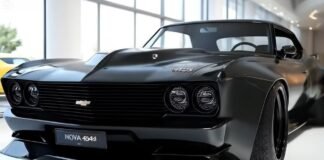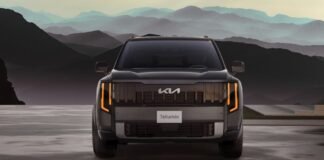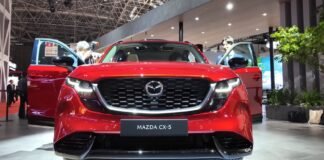Tesla has revealed a groundbreaking update to its 4680 battery cell format: the LFP 4680. This innovation is set to revolutionize the EV industry and reduce America’s reliance on Chinese batteries. The LFP, or lithium iron phosphate cell, eliminates the need for costly and scarce materials like nickel, cobalt, and aluminum, replacing them with abundant iron.
While LFP chemistry doesn’t support high-performance vehicles with extended range, it excels in affordability, making it ideal for economy-focused electric cars.

LFP’s Global Popularity and Challenges
LFP batteries have gained immense popularity worldwide due to their cost-effectiveness. However, most LFP battery production has been dominated by China, with CATL leading the market.
CATL held the patent for LFP technology, but recent patent expirations have opened up opportunities for other manufacturers, including Tesla.
Tesla’s Shift to North American Manufacturing

Tesla has been using CATL-made LFP batteries in its Model 3 and Model Y vehicles produced in Giga Shanghai since 2021. However, the U.S. Inflation Reduction Act of 2022 incentivizes using North American-made batteries, creating a need for Tesla to localize production.
In response, Tesla is developing its own LFP cathode production process in-house, leveraging its 4680 cylindrical battery format to achieve scalability and lower production costs.
Tesla’s Progress with LFP Batteries

Patent Insights and Production Trials
Tesla’s recently filed patent outlines a cost-effective and scalable method for manufacturing LFP cathodes. Former Tesla VP Drew Baglino confirmed that this approach could make Tesla’s LFP batteries more affordable than China’s, even without factoring in tariffs.
Additionally, LinkedIn profiles from Tesla engineers suggest the company has been conducting LFP cathode production trials since 2022, including test batches large enough to power hundreds of vehicles.
Future Applications for LFP Batteries
Reports from October 2024 reveal that Tesla is developing four variants of the 4680 battery cell, including the NC05 “Workhorse” cell. This LFP-based variant is expected to power a range of vehicles, including the Cybertruck, Semi, and a new robo-van. Tesla aims to launch these cells with the Cyber Cab production in 2026, potentially enabling vehicles priced below $30,000.
Tesla’s Upcoming Software and Facility Updates
Supercharging Diner Experience
Tesla’s first-ever Supercharging Diner is nearing completion in Los Angeles, blending retro aesthetics with cutting-edge features. Hidden within Tesla’s latest iOS app update is a new interface that allows drivers to order food and services directly from their cars.
This facility, located at 7001 Santa Monica Boulevard, features massive LED screens, a stainless-steel diner, and a 24/7 operating schedule.
Advancing App Functionality
Tesla’s app updates continue to improve the owner experience. Features like Ultra Wideband support for Android phones are being introduced, allowing for more precise phone tracking and hands-free trunk and frunk opening. The app will also include a new NFC prompt to assist owners when phone key functionality fails.
China-Specific Enhancements
In China, Tesla has launched navigation updates to accommodate regional needs, including routing options for highways, tolls, and congestion avoidance. Additionally, supercharger bollards, previously controlled via the app, can now be managed directly from inside Tesla vehicles.
Tesla Insurance and FSD Updates
Insurance Innovations
Tesla Insurance is exploring a potential FSD (Full Self-Driving) discount, factoring in the percentage of time a vehicle uses FSD versus manual driving. This aligns with Tesla’s push to promote safer driving through advanced technology.
FSD Milestones
Elon Musk recently announced that Tesla expects FSD to surpass the safety level of an average experienced driver by Q2 2025. Over time, the technology aims to achieve accident rates 10 to 100 times lower than human-driven vehicles, eventually reaching near-zero crash rates through continuous updates.


